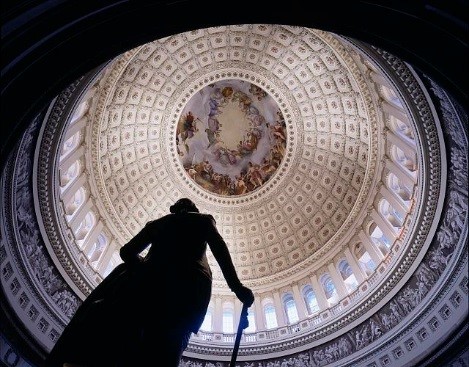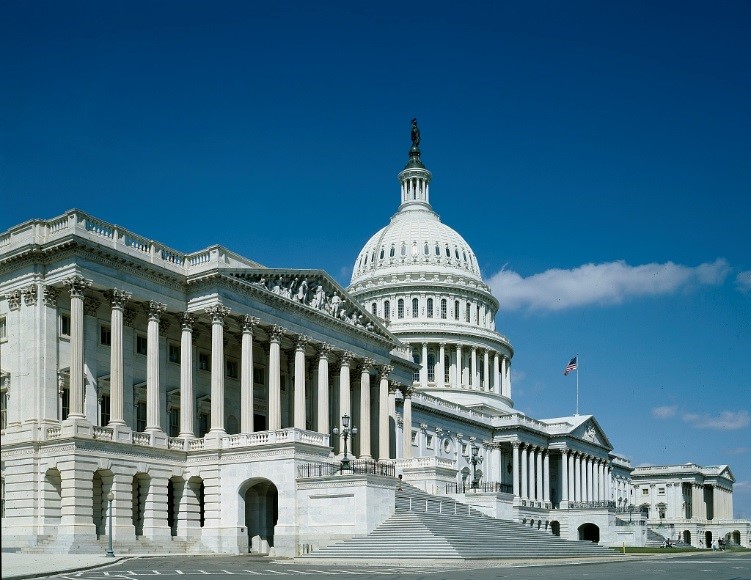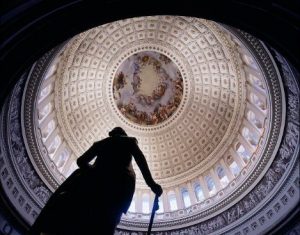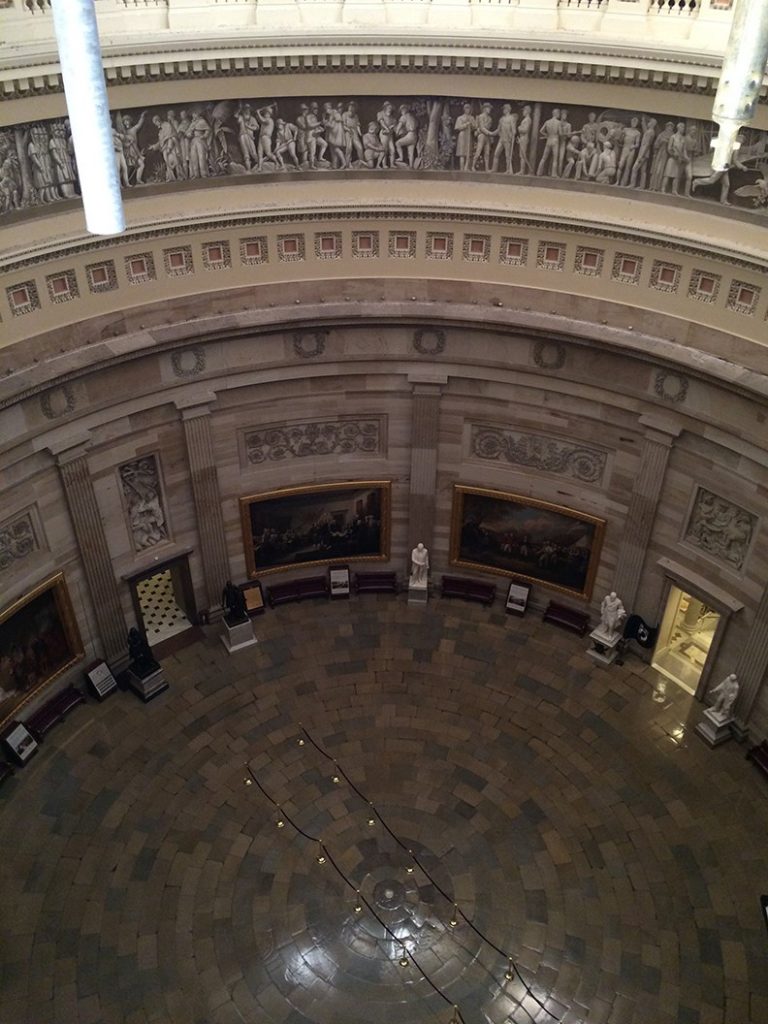

Photo by Carol Highsmith
If you have ever visited Washington, DC, you know that many of the buildings and monuments are architectural treasures. One of these is the US Capital with its Rotunda and spectacular dome.

Photo by Carol Highsmith
The Rotunda is a circular room in the center of the building beneath the Capitol dome. It is 96 feet in diameter and rises 180 feet from the floor to the canopy, with a volume of approximately 1.3 million cubic feet. Completed in 1824, “it has always been considered the most suitable place for the nation to pay final tribute to its most eminent citizens by having their remains lie in state or in honor.” (www.aoc.gov)
All buildings require repairs to fix damage, preserve structural and aesthetic features, and maintain operational systems. However, unlike other structures, architectural treasures like the US Capitol demand special attention to restore and retain their unusual character and value to the public. In 2015, the federal agency Architect of the Capitol (AOC) started on a major restoration of the Rotunda at the US Capitol that, as they put it, “ensures this hallowed space will be enjoyed by generations of visitors, staff and members of Congress for years to come.”
Restoring Piece of History
According to the AOC, “Over time, water leaking through the Capitol Dome and into the building caused more than 1,000 cracks, damaging paint, cast iron, stone and decorative elements in the Rotunda. Beginning in July 2015, and throughout the restoration process, the Architect of the Capitol repaired ironwork, upgraded electrical and mechanical systems, installed new lighting, removed hazardous materials and returned the Rotunda’s paint scheme to more historically accurate colors.”

Capitol Dome Statuary & Frieze Decorations
During this project, Pucuda Leading Edge was asked to develop a 3-layer, protective canopy to be used on scaffolding erected by Safway in the interior of the Rotunda. Pucuda created the drapery for the lower canopy that protected all statuary and wall frieze decorations along the surrounding wall, directly under the dome.
The prototype for this canopy is shown below.

Pucuda Leading Edge Prototype Canopy Netting
It’s interesting to see how this important national restoration project came together. The entire process was documented in photographs by the AOC and can be found on Flickr as well as the AOC website by going to these links:
https://www.flickr.com/photos/uscapitol/albums/72157656861734742/page1
https://www.aoc.gov/rotunda/images.
Working with Protective Canopy Experts
Whether you are restoring a historical site, upgrading a modern building or protecting people and assets, preservation and safety are critically important during the entire construction project. Working with a protective canopy expert such as Pucuda Leading Edge can help streamline the project safety requirements from planning through implementation.
Designing and manufacturing nets and netting systems have been Pucuda’s sole focus for more than 25 years. The company provides innovative construction netting solutions and applies cutting-edge technology at major construction sites from coast to coast.
Pucuda Leading Edge façade containment nets provide safety for the long or short term. These sleek-looking netting systems provide an effective safety barrier to protect pedestrians from falling debris around buildings undergoing renovation, crumbling concrete, or a decaying cornice. The façade containment nets also keep the sidewalks below open and clear for local businesses and pedestrians.
For more information about construction safety products, feel free to download our Safety Netting Systems Product Guide. Or, contact one of our netting experts if have any questions about nets or need a netting solution for your project.








